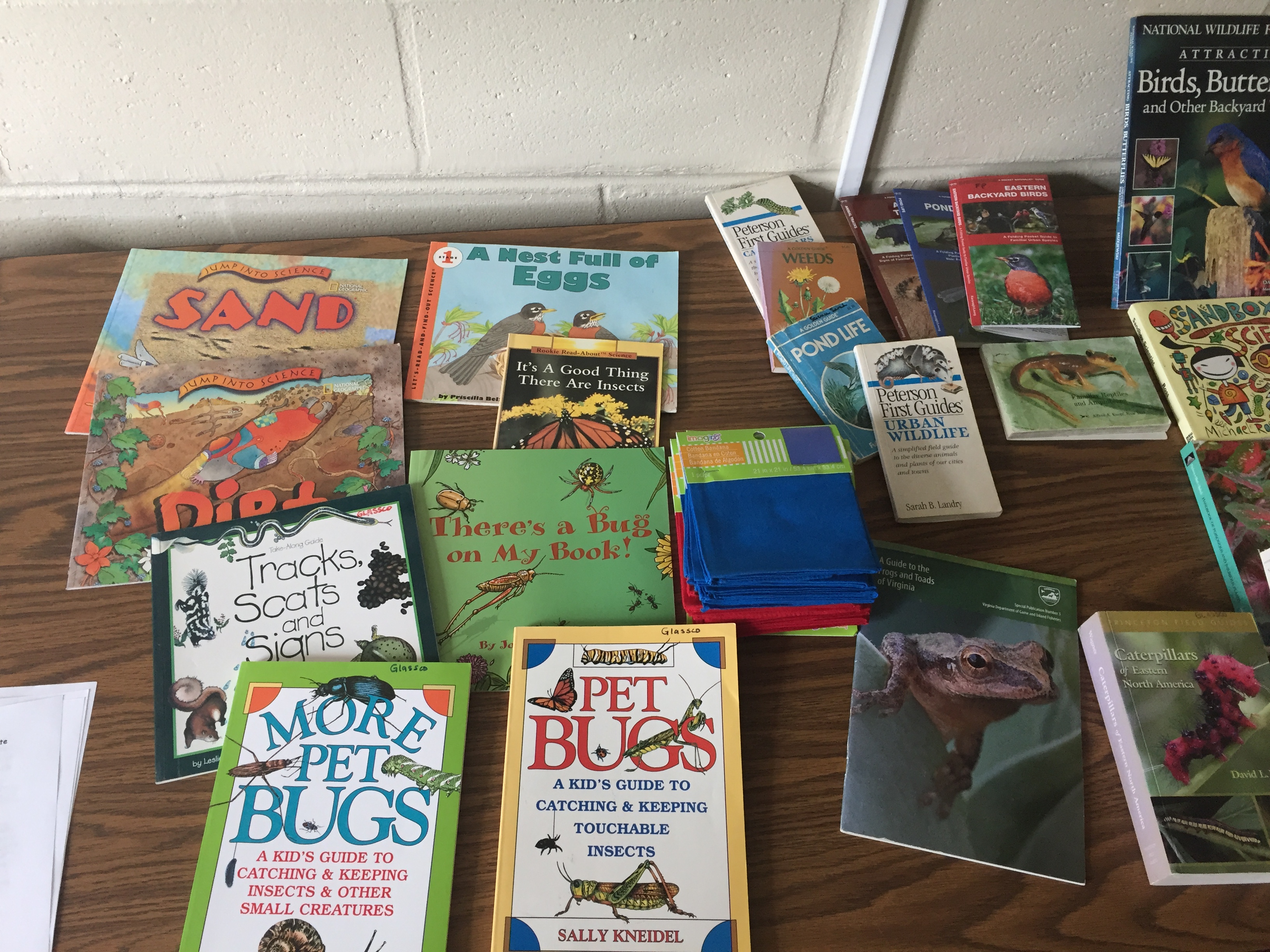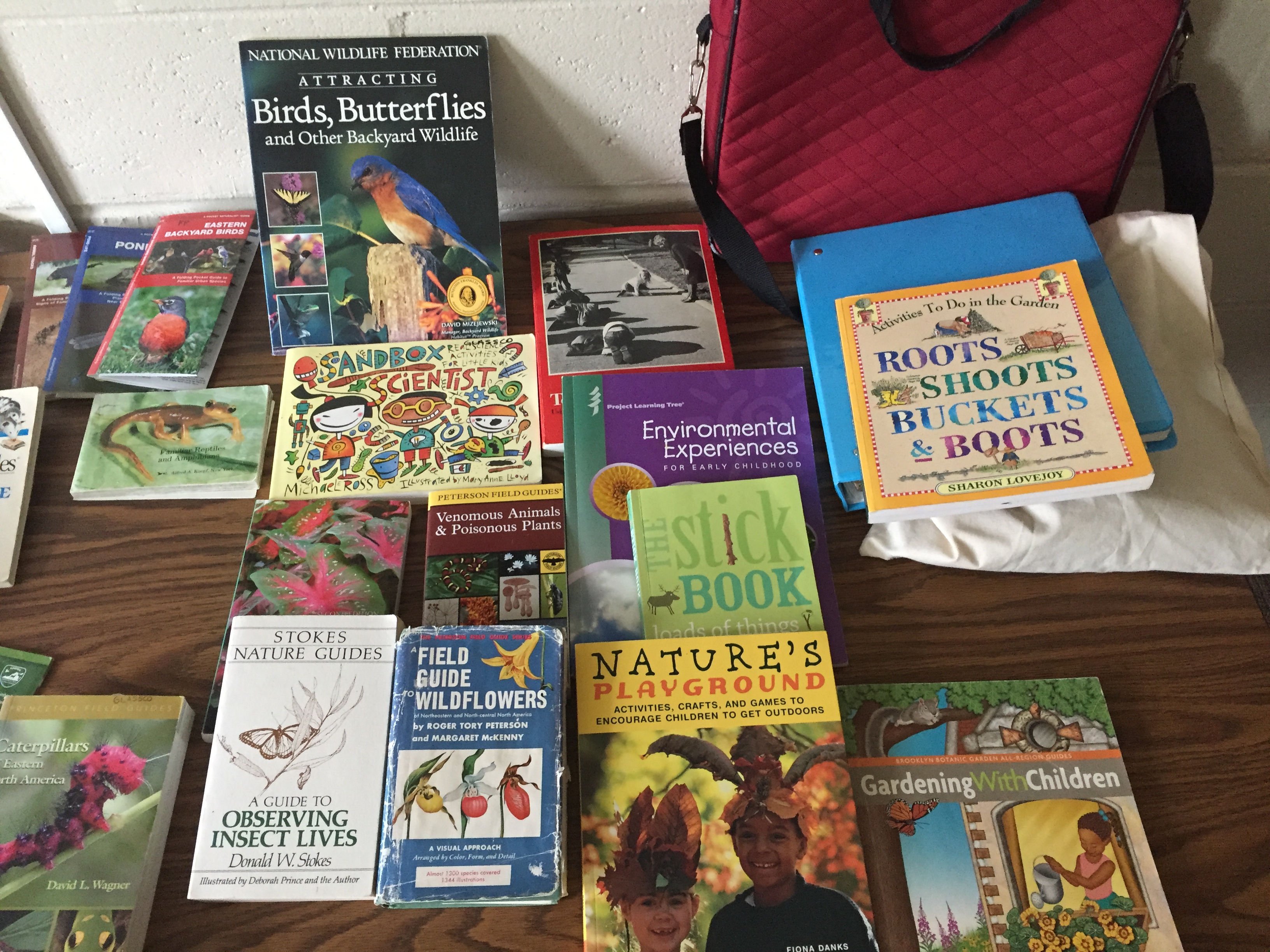California Dreaming… #NSTA17 Is Finally Here!
By Guest Blogger
Posted on 2017-03-30
I arrived in the City of Angels Wednesday afternoon to find a whole lot of equally enthusiastic #NSTA17 conference attendees. This is a HUGE deal, and we have a huge number of choices. I’m focusing on the engineering end of the spectrum—as an engineering educator who specializes in culture change through integrated STEM through engineering, I am always on the lookout for new, innovative, and fun ideas to engage teachers AND students in problem solving. And as a human, I cannot possibly get to every session that interests me. But even restricting my choices to those who indicate engineering is involved, I have a FULL dance card for every single slot—with many having three or more choices! What a terrific “problem” to have.
When I consider a new resource or idea for my practice, I look for particular things that truly and definitively teach engineering. For example, as an engineer and engineering educator, engineering is “create” not “build.” “Hands on” is simply that, and without constraints (limitations such as time, team, and materials) and criteria (what it must do; or how will we know we’re successful?). And for me (like many students who are kinesthetic learners), virtual or digital-only experiences are not sufficient to help me understand at the deepest level. So the ideal engineering learning opportunity is both hands-on and digital, which when done well takes learners from very local issues to connections to global challenges and in the end, synthesis at the highest level.
Teams, Not Groups
Collaboration is essential for implementing engineering in a meaningful way. One way to demonstrate this is to use teams instead of groups. It may seem to be semantics, but it’s critical to innovation to have teams. Teams are comprised of members who all have a vested interest (and responsibilities) in working toward a solution that will meet the constraints and criteria. Groups typically have some common identifier such as an ability or skill.
And while I’m part of the NSTA team this week, I’ll be looking for sessions that use the F word: failure. Engineers plan for failure. After all, how can we innovate if we know the answer before we start? Teachers aid in this objective greatly by not scaffolding for success, allowing teams time to iterate and ensuring they know they have—and teachers plan for—time to improve. Remember, engineers plan for failure, but honestly? We want to fail in teeny tiny scale—big failures tend to make the news. Seriously, innovation requires iteration. And iteration inspires deeper learning and the synthesis we all seek for our students.
I have filled up my calendar with so many wonderful sessions for Thursday. I’ll be going to as many as I can, stealing—wait, that’s such an ugly word…I mean borrowing to replicate as a sign of my admiration. So I’ll be learning from all of you, asking questions, getting advice, offering to collaborate, and making connections. After all, that’s what engineers do.
 Happy Thursday at NSTA!
Happy Thursday at NSTA!
Author Liz Parry is a guest blogger for NSTA for the 2017 National Conference; follow Liz on Twitter @STEMninjaneer.
More About the 2017 National Conference on Science Education
Browse the program preview, or check out more sessions and other events with the LA Session Browser/Personal Scheduler. Follow all our conference tweets using #NSTA17, and if you tweet, please feel free to tag us @NSTA so we see it!
The mission of NSTA is to promote excellence and innovation in science teaching and learning for all.
Future NSTA Conferences
2017 STEM Forum & Expo
Kissimmee/Orlando, July 12–14
2017 Area Conferences
Baltimore, October 5–7
Milwaukee, November 9–11
New Orleans, Nov. 30–Dec. 2
Follow NSTA
I arrived in the City of Angels Wednesday afternoon to find a whole lot of equally enthusiastic #NSTA17 conference attendees. This is a HUGE deal, and we have a huge number of choices. I’m focusing on the engineering end of the spectrum—as an engineering educator who specializes in culture change through integrated STEM through engineering, I am always on the lookout for new, innovative, and fun ideas to engage teachers AND students in problem solving.
Enhanced E-books Student Editions, Part 2: What Teachers Have to Say About Them
By Carole Hayward
Posted on 2017-03-29
NSTA recently launched e-Books+ Student Editions. In Part 1, we provided information on what the student editions include and the full range of topics available. In this post, we’ll share what teachers have to say about the new student editions and how they can help you in your school and classroom.
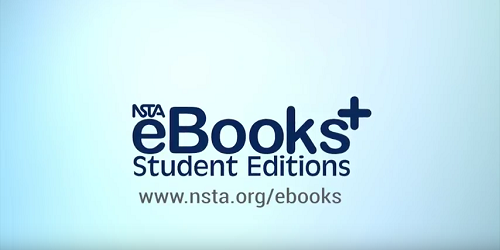
Adding to Your Curriculum
If you are looking for something that is more than just a digital textbook, consider these student editions as a visual and intellectual experience for your students.
“I implemented this e-book in my classroom, for the first time, this year. My students honestly love it. This book covers all of the content standards with life biology, your units are right there ready to go. The students are engaged and actually want to read! It has had a tremendous impact on test scores, and retention. My students are still able to recall what they learned, they recall images and video clips. It is a kinesthetic learning experience. I was so impressed with the first one that I purchased a second about cells, which is equally stunning. I can’t wait to get the complete set and neither can my students!”
Alicia H.
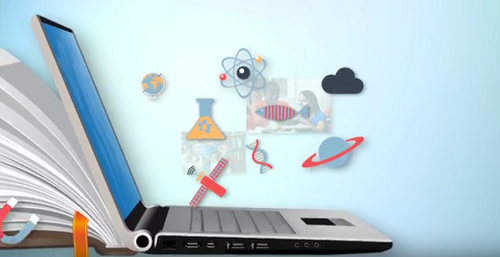
Engaging Resource for Your Students
These are great to use in a station environment. The outstanding graphics as well as the interactive modules and videos add an additional depth that really captures your students’ attention.
“The students love them and are extremely motivated to complete assignments using the e-book.”
Jennifer M.
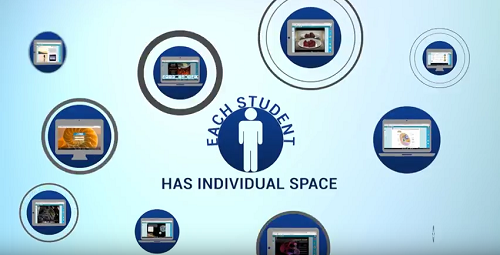
Helping Your Struggling Students
If you have students who are struggling with a particular topic or who have missed a lot of class time, these student editions can be a great resource.
“I am so happy I decided to purchase this e-book…it has turned out to be a great help for those that were struggling and allowing them to dig deeper into the subject matter and work independently.”
Sara G.
Contact and Ordering Information
All purchases of eBooks+ Student Editions must be completed through NSTA’s Customer Service Department. Order by phone (1-800-277-5300) between 9 a.m. and 5 p.m. ET) or fax (1-703-243-7177). Or email us at orders@nsta.org. Download an eBooks+ Student Edition order form.
Pricing information is available per e-book/student/year. For any other questions regarding NSTA’s eBooks+ Student Editions, please contact ebooks@nsta.org.
Follow NSTA
Save
NSTA recently launched e-Books+ Student Editions. In Part 1, we provided information on what the student editions include and the full range of topics available. In this post, we’ll share what teachers have to say about the new student editions and how they can help you in your school and classroom.
Teaching as an art form
By Mary Bigelow
Posted on 2017-03-28
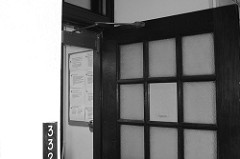 I’m preparing to be a chemistry teacher. In addition to chemistry and teacher prep classes, what else should I study to become an effective teacher? More math or physics? —T., Colorado
I’m preparing to be a chemistry teacher. In addition to chemistry and teacher prep classes, what else should I study to become an effective teacher? More math or physics? —T., Colorado
While math and physics are important (especially if you’re pursuing other certifications), you also could become familiar with another language and the special education requirements in your state. You could pursue a personal interest in history and geography, literature, or the arts to better connect science with other subjects.
As a teacher, you’ll be “on stage” every day. Many teacher prep classes don’t address how to communicate with students and share your enthusiasm and passion for chemistry. That’s where acting experience or a class may help. This doesn’t mean putting on a contrived show but rather using your voice and body language effectively.
After several teachers in my school were recruited into a community theatre group, our confidence and communications in the classroom improved in several areas:
- Enunciating clearly and reaching every corner of the room without shouting and straining your voice
- Incorporating humor and timing
- Improvising based on student interests and questions
- Dealing with distractions
- Showing interest in a student’s question or idea, even if we’d heard it several times before
- Being mindful of your position in the classroom and moving around
- Using strategies such as props and wait-time
- Choosing a well-aimed glare or a quiet whisper to stop some misbehaviors
Who knows what topics you could change from dull to interesting for students?
Online Resources:
- It’s not what you say, it’s how you say it
- Why Teachers Should Be Trained Like Actors
- Using Acting Skills in the Classroom
Photo: https://www.flickr.com/photos/spcummings/361167519/
New NAP Publication Helps Teachers Assess 3-Dimensional Learning in the Classroom
By Cindy Workosky
Posted on 2017-03-28
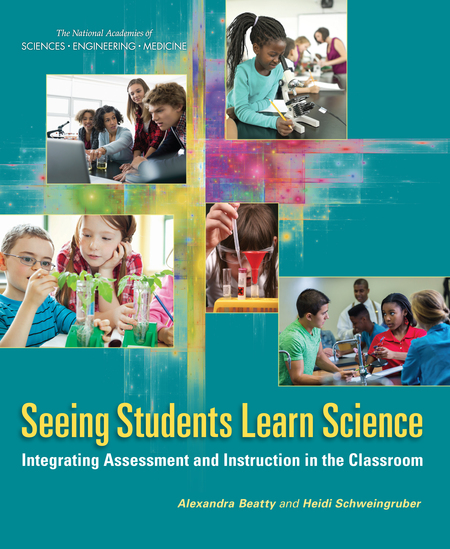
Seeing Students Learn Science
It is a truly exciting time in science education. Science educators across the country are adapting to a new vision of how students learn science guided by the Framework for K–12 Science Education. As a result, science instruction is changing to better tap into students’ natural curiosity and deepen their understanding of the world around them. As instruction is changing, assessments need to change as well. Many science educators recognize that traditional assessments are not appropriate for capturing three-dimensional science learning. But, they may not know what assessments of three-dimensional learning should look like nor how they can be used effectively in science classrooms.
On March 30 at the NSTA National Conference in Los Angeles, I will introduce science educators to a new book from the Board on Science Education at the National Academies of Sciences, Engineering, and Medicine, Seeing Students Learn Science: Integrating Assessment and Instruction in the Classroom. The book draws on research-based recommendations for assessment to explore how classroom teachers can use assessments as part of instruction to advance students’ three-dimensional learning.
Traditional science assessments do not allow teachers to fully understand students’ mastery of science and engineering practices, nor do they provide insight into students’ learning trajectories. In contrast, effective classroom assessments in science can help teachers collect information about students’ understanding of core ideas and crosscutting concepts as well as students’ ability to engage in the scientific and engineering practices. Good assessments of 3–D science learning can help teachers make decisions about next steps for learning and identify the supports that individual students or groups of students may need. They can also help students take control of their own learning by helping them see what they have mastered and where they may need more practice. A major goal is for assessment to become an integral part of science teaching practice, rather than an interruption.
The book is organized around key questions related to classroom assessment.
- What’s really different? — Describes how ideas about science learning and instruction have changed and why different kinds of assessments are needed
- What does this kind of assessment look like? — Discusses specific examples to see how classroom assessment of 3-dimensional learning can work in practice.
- What can I learn from my students’ work? — Provides a look at the sorts of information that can be obtained from different types of assessment and how they can provide windows into students’ thinking.
- How can I build new kinds of assessments into the flow of my instruction? — Suggests ways to adapt assessments teachers already use so that they are consistent with three-dimensional learning and instruction.
- How can I work with others in my school, district, and state? — Discusses how classroom assessment related to broader assessment systems that include large-scale assessments used for monitoring purposes.
The new book is designed to help teachers create and implement classroom assessments that capture three-dimensional learning. It helps teachers think about how to embed assessments within engaging classroom tasks and how to interpret and use novel kinds of assessment information. It also offers ideas and questions teachers can use to reflect on what they can adapt right away and what they may need to work on developing over time. My talk will highlight some of the key ideas from the book, illustrated with examples, and explore how the book can be used to help teachers’ reflect on and improve their classroom instruction. I would love to see you there! If you will not be at the conference, read the book online here.
_____________________________________________________
Editor’s Note: Featured speaker session will take place on Thursday, March 30 from 12:30-1:30 pm at the Los Angeles Convention Center, Petree Hall C.

Heidi Schweingruber
Heidi Schweingruber is the director of the Board on Science Education at the National Research Council (NRC). She co-directed the study that resulted in the report A Framework for K-12 Science Education (2011). She served as study director for a review of NASA’s pre-college education programs completed in 2008 and co-directed the study that produced the 2007 report Taking Science to School: Learning and Teaching Science in Grades K-8. Prior to joining the NRC, Heidi worked as a senior research associate at the Institute of Education Sciences in the U.S. Department of Education. Heidi holds a Ph.D. in psychology and anthropology, and a certificate in culture and cognition from the University of Michigan.
The mission of NSTA is to promote excellence and innovation in science teaching and learning for all.
Future NSTA Conferences
2017 National Conference
STEM Forum & Expo
Follow NSTA

Seeing Students Learn Science
The @STEMninjaneer Guide to #NSTA17 Los Angeles
By Guest Blogger
Posted on 2017-03-27
This week I’m headed to the NSTA National Conference on Science Education in LA, where I’ll be blogging and tweeting about all things engineering and STEM! As an engineering educator, I am keenly interested in helping to prepare our future workforce and citizenry through meaningful, robust, and integrated instruction that includes engineering. In my career, I have worked as an engineer at IBM, owned a science/engineering education business, directed National Science Foundation grants focused on high-quality STEM instruction, taught first-year engineering, worked intensively with schools (especially high poverty; high needs and also gifted) to use engineering as a way to change the culture, and done research and lots of practice with the Engineering is Elementary team from the Museum of Science Boston.
As a consultant, my goal for the schools I work with are simple: That students will go on to the next level as (1) confident learners who can work productively with other people (2) problem solvers who can use data and evidence to make decisions and (3) people who can fail, and then recover from it, because that’s what humans do.
Engineering brings to the STEM table a myriad of things, not the least of which is a set of habits of mind that help develop good citizens. As reported in a 2009 National Academies of Engineering publication, the habits of mind of engineers are (1) communication (2) collaboration (3) creativity (4) optimism (5) ethical considerations and (6) systems thinking. Of course, many professions across the academic spectrum certainly develop and utilize similar skills sets. But let me tell you about them from the engineering point of view:
- Communication: Clearly, the ability to communicate effectively will serve anyone well. In engineering, being able to speak, write and read about your ideas and solutions could make the difference between maybe changing the world or just having a good idea! I tell my engineering students—even the kindergarteners!—that you could have the best idea in the world but if you can’t share it effectively, it’s just that—an idea.
- Collaboration: Engineers never work in isolation, despite some old misconceptions and stereotypes. As an engineering manager/mechanical engineer, I specialize not only in the process skills of engineering projects but also in the “moving parts” realm from the mechanical engineering end. When I worked for IBM, I traveled internationally to purchase a part built to our specifications. However, my mechanical part is of no good if I didn’t also collaborate with electrical engineering, computer science and manufacturing engineering colleagues—since my part went in their system. When I talk to students, I challenge them to think of one profession where someone works completely alone. Collaborating effectively is a life skill, one that needs to be taught early and often. Engineering is natural for this.
- Creativity: It is said that engineers “create what has never been.” Indeed, while many engineers improve upon existing technologies (meaning ANYTHING designed by humans, even if it doesn’t use a plug!), engineering is primarily about innovation. Innovation relies on creativity—new ideas, new uses for old things and solving unfamiliar problems.
- Optimism: This is an interesting word to associate with the public perception of engineering provided only by “Dilbert” for generations! In my world, optimism has huge and important meaning. For an engineer, it translates into persistence. The persistence to keep trying even after many “failures”; the persistence to try something completely new and often the persistence to be the lone voice in support of taking a chance. Optimism is a cornerstone of engineering.
- Ethical Considerations: Especially with young children, ethical behavior is often left to the adults in any one child’s life. In only a few professions are ethics considered critical, and even then skepticism often abounds. In engineering, ethics are a required part of our training. For some of our disciplines, particularly those in the broader fields of civil, electrical and mechanical design, it is a requirement that one become licensed as an expert. This involves an 8-hour exam the last semester of college, four years under the direct supervision of a professional engineer, and then sitting for another comprehensive exam. All graduating engineers, regardless of discipline, are invited to take part in the Order of the Engineer professional commitment ceremony, pledging to use the skills they have developed, included training in ethics, for the benefit of society and the people they serve. At that ceremony, we are given a simple band to wear on the small finger of our writing hand, as a reminder of our professional pledge every time we sign our names. Teaching and talking about ethical behavior begins in kindergarten in my schools.
- Systems Thinking: Rather than a personal characteristic of the engineer herself, “systems thinking” is more of an overall perspective engineers are trained in. We are taught to draw boundaries around our problem, identify inputs and expected outputs and use all of this in our problem definition and solution. Teachers are also trained this way, with different terminology! At the simplest level, the classroom walls are the first boundary; the primary input the students (!), standards, etc and the primary output is achievement.
 I am most excited about this opportunity to blog from NSTA because every single time I’m around people who are doing really great work and are excited enough to share it, it’s contagious! I love to learn, and I’ve never left an NSTA gathering without learning. I’m also really excited to have the opportunity to interact with those in the science community who are experts in engineering, those who are just learning, and those who have no idea but want to learn. Please look for me in sessions about engineering or follow this blog, and please use hashtags #NSTA17 and #STEMninjaneer on any reposts—thanks so much!
I am most excited about this opportunity to blog from NSTA because every single time I’m around people who are doing really great work and are excited enough to share it, it’s contagious! I love to learn, and I’ve never left an NSTA gathering without learning. I’m also really excited to have the opportunity to interact with those in the science community who are experts in engineering, those who are just learning, and those who have no idea but want to learn. Please look for me in sessions about engineering or follow this blog, and please use hashtags #NSTA17 and #STEMninjaneer on any reposts—thanks so much!
Author Liz Parry is a guest blogger for NSTA for the 2017 National Conference; follow Liz on Twitter @STEMninjaneer.
More About the 2017 National Conference on Science Education
Browse the program preview, or check out more sessions and other events with the LA Session Browser/Personal Scheduler. Follow all our conference tweets using #NSTA17, and if you tweet, please feel free to tag us @NSTA so we see it!
The mission of NSTA is to promote excellence and innovation in science teaching and learning for all.
Future NSTA Conferences
2017 STEM Forum & Expo
Kissimmee/Orlando, July 12–14
2017 Area Conferences
Baltimore, October 5–7
Milwaukee, November 9–11
New Orleans, Nov. 30–Dec. 2
Follow NSTA
This week I’m headed to the NSTA National Conference on Science Education in LA, where I’ll be blogging and tweeting about all things engineering and STEM! As an engineering educator, I am keenly interested in helping to prepare our future workforce and citizenry through meaningful, robust, and integrated instruction that includes engineering.
Stand for Students, Stand for Science
By David Evans, NSTA Executive Director
Posted on 2017-03-26
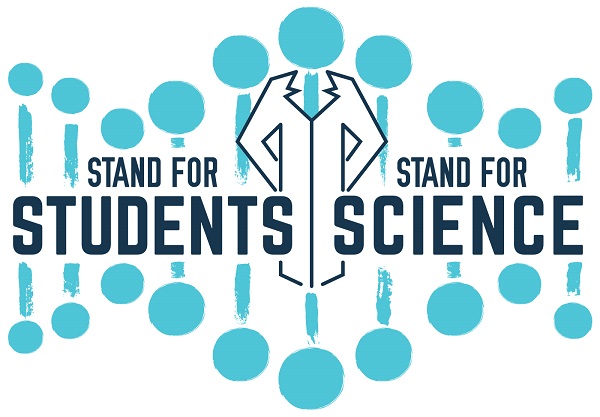
Since the founding of our country, indeed since the beginning of western democracy, being well-informed includes being well-informed about science. “Whenever the people are well-informed, they can be trusted with their own government,” said Thomas Jefferson, 228 years ago, not long before he established the first science agency in the U.S. government, the Survey of the Coast, and commissioned the Lewis and Clark Expedition.
Today there is a growing rift between science as a way to understand the natural world and the formulation of public policy. We “debate” the causes of climate change; we think that evolution is “only” a theory; and many believe that vaccination causes autism. “Alternative facts” can be proclaimed with a straight face.
Years ago, Isaac Asimov noted, “There is a cult of ignorance in the United States, and there has always been. The strain of anti-intellectualism has been a constant thread winding its way through our political and cultural life, nurtured by the false notion that democracy means that ‘my ignorance is just as good as your knowledge.”
Now, more than ever, the need for science education is staggering and public support for science is undermined by deliberate misinformation and simple ignorance.
The March for Science is an effort to remind the public of the benefits of science and science education. These benefits range from meaningful careers for our children to improving our health to living sustainably on our planet to being well-informed in the voting booth. As educators—and as scientists—we have stayed in the shadows too long and I believe we must move into the spotlight of public attention. A bright light will sometimes expose weaknesses but we know that the only way to repair a weakness is to first see it.
In agreeing to partner with the March for Science, NSTA subscribed to a set of core principles and goals that I want to share with you:
Core Principles – We Support:
- Science that serves the common good
- Evidence-based policy and regulations in the public interest
- Cutting-edge science education
- Diversity and Inclusion in STEM
- Open, honest science and inclusive public outreach
- Funding for scientific research and its applications
Goals for the March:
- Humanize science
- Partner with the public
- Advocate for open, inclusive, and accessible science
- Support scientists
- Affirm science as a democratic value
I expect that each of these will receive some exposure at the March. None of these is political in a partisan way. And all of them are what we hope for in a science literate society.
Please join me on April 22 as we Stand up for Students and Stand up for Science.
 Dr. David L. Evans is the Executive Director of the National Science Teachers Association (NSTA). Reach him via e-mail at devans@nsta.org or via Twitter @devans_NSTA.
Dr. David L. Evans is the Executive Director of the National Science Teachers Association (NSTA). Reach him via e-mail at devans@nsta.org or via Twitter @devans_NSTA.
The mission of NSTA is to promote excellence and innovation in science teaching and learning for all.
Follow NSTA

Experiencing nature–educators make it happen for children and other teachers
By Peggy Ashbrook
Posted on 2017-03-26
Nature play and exploration varies in early childhood (broadly: infant to grade 3) programs and are subject to the local and state licensing regulations, a program’s choice of curriculum, the local environment and weather, and the support of the administration. A conference is an effective way to get a lot of science content knowledge about that local environment and the living organisms that reside there, and to learn developmentally appropriate ways to share that information with young children as you give them experiences that will invite them to continue to explore nature over their lifetimes.
![]() The “Getting Kids Outdoors in Nature” conference, organized by the early childhood committee of NoVA Outside, brought together educators in varied roles from the usual mix of early childhood programs, all interested in learning more about nature education.
The “Getting Kids Outdoors in Nature” conference, organized by the early childhood committee of NoVA Outside, brought together educators in varied roles from the usual mix of early childhood programs, all interested in learning more about nature education.
 In her keynote address, Outdoor Education and Nature Connection Specialist Amy Beam encouraged us to let children take risks that help develop their gross motor skills and their confidence in their own problem-solving abilities. She spoke about those “tender conversations” when children are confronted with a robin eating a ‘friend’ worm and begin to understand the needs of living organisms. The examples she brought of the many different materials she and the children take with them on their long walks through natural areas helped us
In her keynote address, Outdoor Education and Nature Connection Specialist Amy Beam encouraged us to let children take risks that help develop their gross motor skills and their confidence in their own problem-solving abilities. She spoke about those “tender conversations” when children are confronted with a robin eating a ‘friend’ worm and begin to understand the needs of living organisms. The examples she brought of the many different materials she and the children take with them on their long walks through natural areas helped us plan for our own programs. Beam works as an outdoor educator with Montessori schools in the Washington, D.C. area, and she appeared in the film Mother Nature’s Child.
plan for our own programs. Beam works as an outdoor educator with Montessori schools in the Washington, D.C. area, and she appeared in the film Mother Nature’s Child.
 In her breakout sessions Beam taught fun activities, games, songs and techniques that awaken and deepen children’s innate love of nature and learning.
In her breakout sessions Beam taught fun activities, games, songs and techniques that awaken and deepen children’s innate love of nature and learning.  Lesley Romanoff, also the director of a half-day parent co-op program, has found that play gets a child closer to “ready to learn” than anything else, but adults/parents need to see that teachers are checking off the boxes of curriculum and standards. She advised directing attention to the value of play and playful learning by documenting and explaining to parents how nature play does more than check all the boxes, meeting education standards and especially incorporating the arc of human growth and development so children are taught in a developmentally appropriate way. For educators who plan to incorporate more time in natural areas, Romanoff recommends to “start small,” recounting how her first walking excursions were too far, leaving some children too tired and cranky to enjoy the natural space when they arrived. Now she pulls a wagon. When most children wanted to ride in the wagon, Romanoff talked with them, saying, “You want to go in the wagon but you don’t need to go in the wagon.” These conversations built empathy which was displayed at the park as children figured out how to partner with each other to accomplish tasks that were easier for one child and hard for another
Lesley Romanoff, also the director of a half-day parent co-op program, has found that play gets a child closer to “ready to learn” than anything else, but adults/parents need to see that teachers are checking off the boxes of curriculum and standards. She advised directing attention to the value of play and playful learning by documenting and explaining to parents how nature play does more than check all the boxes, meeting education standards and especially incorporating the arc of human growth and development so children are taught in a developmentally appropriate way. For educators who plan to incorporate more time in natural areas, Romanoff recommends to “start small,” recounting how her first walking excursions were too far, leaving some children too tired and cranky to enjoy the natural space when they arrived. Now she pulls a wagon. When most children wanted to ride in the wagon, Romanoff talked with them, saying, “You want to go in the wagon but you don’t need to go in the wagon.” These conversations built empathy which was displayed at the park as children figured out how to partner with each other to accomplish tasks that were easier for one child and hard for another Alonso Abugattas, Arlington Parks Naturalist and Capital Naturalist blogger, advises us to be flexible and use the “interpretive moment” to teach about whatever in nature has children’s attention. His enthusiasm for small wildlife was infectious: “Those millipedes are so cool!” making me excited about searching for them. If you have difficulty locating small animals like millipedes and isopods, use his technique of putting a board or old door down on the ground. After a few days, open this “Door to the Underground” to reveal millipedes, isopods, slugs, worms, and more. He cautioned us to always check for yellow jacket wasps before we turn over a log as they may be nesting under it. And to wash hands after outdoor explorations.
Alonso Abugattas, Arlington Parks Naturalist and Capital Naturalist blogger, advises us to be flexible and use the “interpretive moment” to teach about whatever in nature has children’s attention. His enthusiasm for small wildlife was infectious: “Those millipedes are so cool!” making me excited about searching for them. If you have difficulty locating small animals like millipedes and isopods, use his technique of putting a board or old door down on the ground. After a few days, open this “Door to the Underground” to reveal millipedes, isopods, slugs, worms, and more. He cautioned us to always check for yellow jacket wasps before we turn over a log as they may be nesting under it. And to wash hands after outdoor explorations. Nature play and exploration varies in early childhood (broadly: infant to grade 3) programs and are subject to the local and state licensing regulations, a program’s choice of curriculum, the local environment and weather, and the support of the administration.
Ed News: How Many U.S. Students Are Taught By Qualified Teachers?
By Kate Falk
Posted on 2017-03-24

This week in education news, education programs could still be vulnerable in President Trump’s budget; most U.S. public school students are taught by qualified teachers; and utility-value intervention with parents increases students’ STEM preparation and career pursuit.
One Reason Young People Don’t Go Into Science? We Don’t Fail Well
Learning resilience is fundamental to a successful career as a scientist. The experiments we try will fail many times before they work, whether as an undergraduate, a PhD student, or a postdoc gunning for a faculty position. I’m dealing with this right now in my third laboratory rotation: In trying to study a protein in zebrafish, I made a mistake and all my embryos died. So, I’m troubleshooting and doing the experiment again. Click here to read the article featured in STAT magazine.
What Education Programs Could Still Be Vulnerable in Trump’s Budget?
President Trump’s budget plan for education has singled out several programs to be slimmed down or eliminated. But all we know right know is based on a mere “skinny” federal budget the administration released last week. It doesn’t detail all of the cuts and additions Trump’s team wants to make. In the interim, we talked with Tom Corwin and Michele McLaughlin and they discussed which programs might be particularly vulnerable to proposed cuts, elimination, or some kind of lack of love from Trump. Click here to read the article featured in Education Week.
How Many U.S. Students Are Taught By Qualified Teachers?
It turns out, most U.S. public school students are taught by certified and experienced teachers, according to a report by the National Center for Education Statistics. Still, the numbers vary as you look across states, school districts, and by different school and student characteristics. The report uses data from the Schools and Staffing Survey and the National Assessment of Educational Progress. Click here to read the article featured in Education Week.
Getting Girls Into STEM: The Power Of Blended (And All-Female) Instruction
Jackie, the team captain of St. Mary’s all-girls robotics team, knows a thing or two about breaking the mold. During a panel on the importance of STEM education for women, she explained what it’s like to be a female student competing in a male-dominated program: “Not only were we the only all-girls robotics team,” she explained of a recent competition, “we were the only team that actually allowed girls to touch the robots.” Click here to read the article featured on EdSurge.com.
Utility-Value Intervention With Parents Increases Students’ STEM Preparation and Career Pursuit
When parents of high school students are given guidance on how to talk about the importance of science and math, their children are more likely to score well on a STEM standardized test and, years later, pursue a STEM career, finds a study from the University of Virginia and the University of Wisconsin-Madison. Click here to read the article featured in Education Week.
Stay tuned for next week’s top education news stories.
The Communication, Legislative & Public Affairs (CLPA) team strives to keep NSTA members, teachers, science education leaders, and the general public informed about NSTA programs, products, and services and key science education issues and legislation. In the association’s role as the national voice for science education, its CLPA team actively promotes NSTA’s positions on science education issues and communicates key NSTA messages to essential audiences.
The mission of NSTA is to promote excellence and innovation in science teaching and learning for all.
Follow NSTA

This week in education news, education programs could still be vulnerable in President Trump’s budget; most U.S. public school students are taught by qualified teachers; and utility-value intervention with parents increases students’ STEM preparation and career pursuit.
Contacting parents
By Mary Bigelow
Posted on 2017-03-23
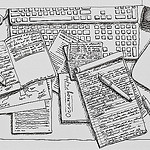 I have several students in my biology classes who are very disruptive. I know I should contact their parents, but as a new teacher I’ve never done this. How I should handle this? —C., California
I have several students in my biology classes who are very disruptive. I know I should contact their parents, but as a new teacher I’ve never done this. How I should handle this? —C., California
I found at the secondary level, it was more effective to work with the students first, then contact parents (or guardians) about misbehavior after exhausting in-house strategies. Even if you typically e-mail or text, having a real-time voice conversation with parents or guardians may be the most effective way to express your concern.
Determine an appropriate time to speak (it may not be possible for all parents to talk while at work) through a text or e-mail. Or ask them to call you and suggesting times, such as early morning or late afternoon. (It’s a good idea in your welcome letter at the beginning of the year to ask parents the best way and time to communicate.)
Prepare notes to help stay focused on the problem and what you want to discuss.
Start with some positive comments about the student and emphasize you want what’s best for their child to be a successful learner. Provide examples of the behavior in question and how you tried to correct the situation. Ask for other ideas on how you can work together to resolve the issues. If the disruptive behavior occurs during a lab activity, remind the parents of the safety acknowledgement form they signed.
Give the parents time to respond and listen to them without interruption, using wait-time before you respond).
You can ask your mentor or administrator to be present (be sure to mention that he/she is there).
At the end, summarize what you and the parents will do and expectations for the student. Thank them for their time and input. Follow up on the conversation with any results.
Annotate your notes and keep a log of your communications.
Photo: https://www.flickr.com/photos/eclectic-echoes/6681499071/



